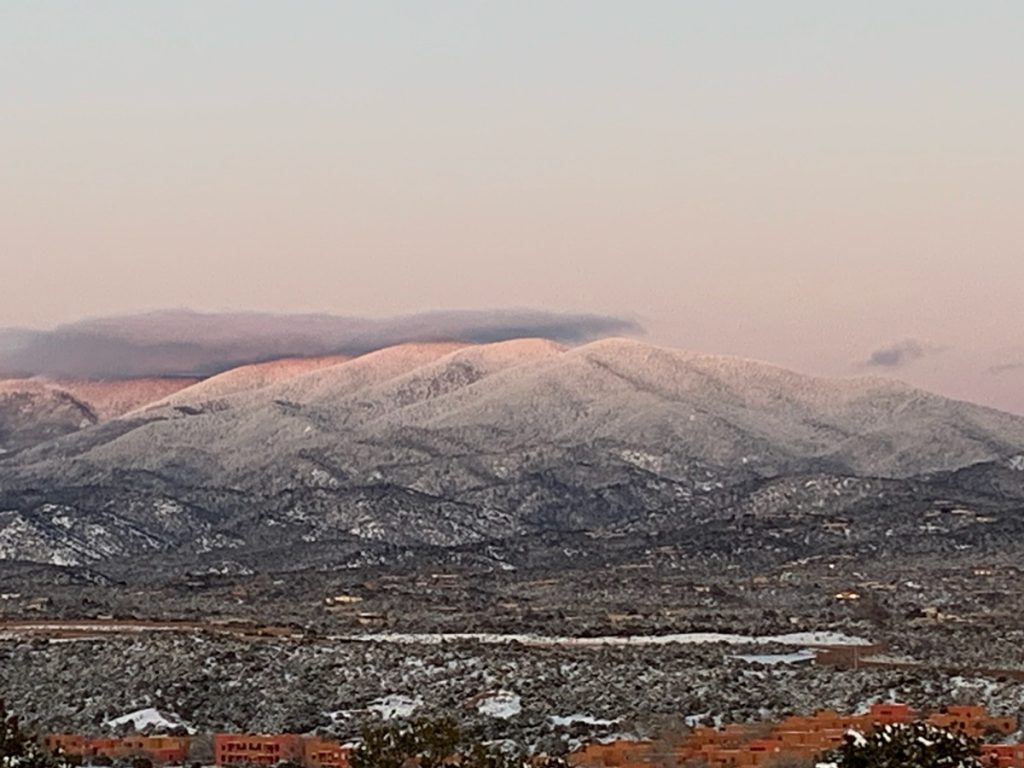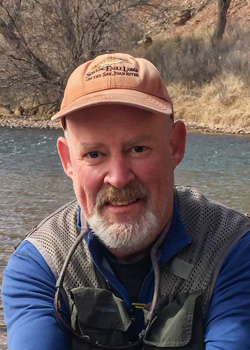
We got a good, old-fashioned snow dump last night, the kind that could put your car in a ditch if you got too distracted by happy visions of green hillsides come spring.
Since they canceled school today, I did what I viewed to be my fatherly duty, to encourage my son, Gus, to brave the hellish roads up to the ski area. As my own dad used to say, it would be “powder past the knees and silence in the trees,” and it would be a crime for Gus to miss it.
Here at my desk, I’m reveling in thoughts of a robust snowmelt that will flush the trout streams of their silt and fill the air with insects for the birds and fish to eat. I’m seeing the sparkle of inundated fields, trucks taking crops to farmers markets, and stacks of alfalfa bales to feed cows and horses through next year’s winter.
I’m also thinking of the downsides to heavy snowstorms, what northern New Mexicans have forever viewed as “life.” For a rancher friend of mine, this storm couldn’t have come at a worse time. He works a BLM allotment out near Cuba, where over a foot of wet snow has piled up among the piñon and junipers.
He has eleven pregnant heifers out there, and must bring them home right away so his family can attend to their births, which for first-time mothers, is usually the most difficult.
Here’s what the snowstorm has done. Plowing roads, as obligated by his day job with the Department of Transportation, will compete for his time to deal with his heifers. Going into the allotment with heavy loads of horses and then out with heavier loads of cows will be a nightmare if the roads get too greasy.
The roundup will strain the resolve of his horses and three cattle dogs, and the routine task of breaking pond ice will still need to be done.
One thing for certain, there’s no alternative to bringing in the heifers, especially since they’re all ready to pop. Even if they birthed without difficulty out on the range, their calves could land on snow and might freeze in the night. Not having gone through this before, the mothers could get confused between their instincts to attend to their own recovery or protect their babies from coyotes and the cold.
As a fisherman working in the conservation field, I’m grateful to have learned that my fishing — and recreation in general — is but a small component of what must be considered when we discuss our natural resources and how they’re used. Managing public lands, especially their multiple use, is a big and convoluted issue. How do we do this?
Perhaps more importantly, how do we do this with adequate respect and appreciation for our communities?
There are few easy answers. Just ask the village of Costilla, to which heavy winter snowfalls (and subsequent runoff) can be a blessing and a curse. Due to the presence of a large beaver colony, Costilla faces a unique challenge in which a large source of stored water is both unavailable to downstream property owners and a nuisance to upstream residents whose private land is frequently flooded by the industrious beavers. Solving this problem — reducing flooding and delivering water downstream while maintaining abundant pond storage — will require the active support of resource management agencies
It will also require public support, specifically the public’s deeper understanding of “life” in northern New Mexico. It’s about so much more than mountain biking and fishing, or my son getting a powder day for the ages. We also need to remember that there are villages that need water and heifers that need to come home, among many other things that keep our rural areas alive.



